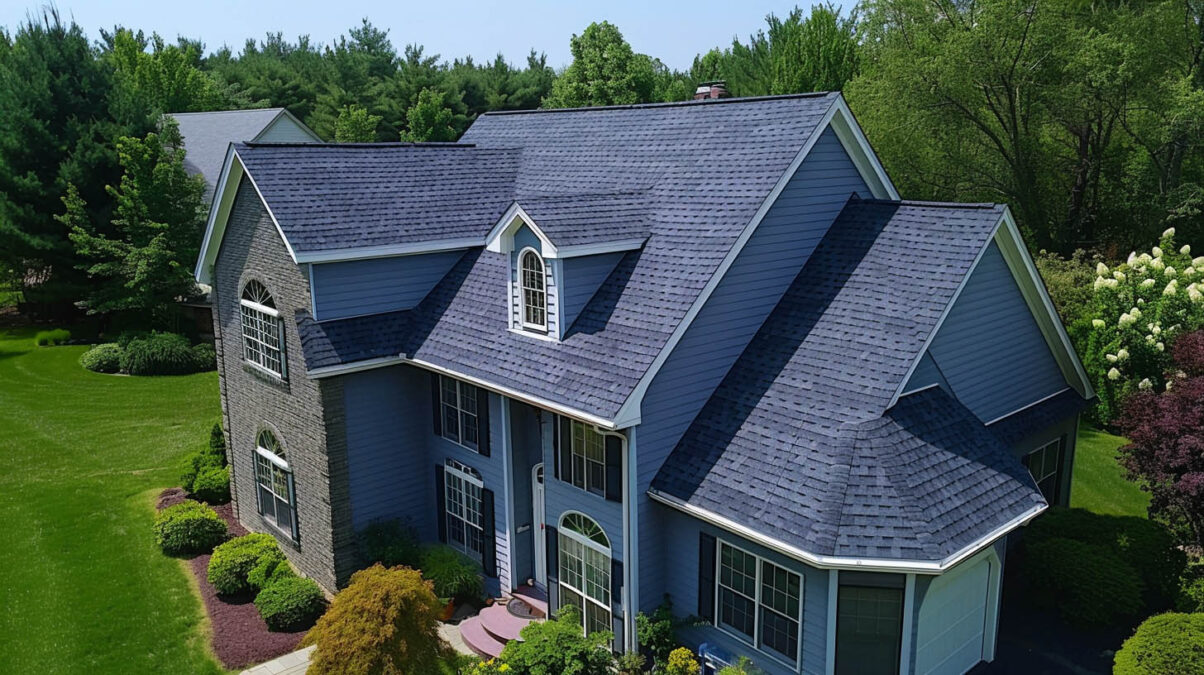The Right Time for a New Roof: What Homeowners Need to Know

As Mary sat in her kitchen, enjoying her morning coffee, she noticed something that sent a chill down her spine. A small, damp stain was spreading across the ceiling above her dining table. At first, she thought it might just be condensation from the cooler weather. But after a week of rainy days, that small stain became a larger problem. With water trickling down the walls, it became clear—her roof had finally given up after decades of wear and tear.
Like many homeowners, Mary postponed roof repairs, hoping the old shingles would hold on just a little longer. After all, replacing a roof is no small project. However, with water damage threatening the structural integrity of her home, Mary realized she could no longer delay. It was time for a new roof, and as she quickly learned, the process involved much more than picking out new shingles.
Mary’s experience mirrors countless homeowners who eventually face the reality of replacing their roofs. Whether it’s due to age, weather damage, or simple wear and tear, knowing when and how to replace your roof is crucial to maintaining the safety and value of your home. In this article, we’ll explore the key signs that indicate it’s time for a new roof, the costs involved, and the long-term benefits of this essential investment.
The Importance of a New Roof
A home’s roof is its first line of defence against the elements. Over time, exposure to rain, wind, snow, and sun can take a toll on roofing materials, leading to leaks, energy inefficiency, and even structural damage. According to the National Roofing Contractors Association (NRCA), a well-maintained roof can last between 20 and 30 years, depending on the materials used [NRCA, 2021]. However, the roof may need replacement sooner if not properly cared for.
The Insurance Institute for Business & Home Safety (IBHS) reports that over 90% of roof-related water damage claims are caused by roof failures due to a lack of maintenance or materials reaching the end of their lifespan [IBHS, 2022]. Delaying roof replacement can be costly—not just in terms of repairs but also in terms of potential damage to the home’s foundation, insulation, and interior.
Signs It’s Time for a New Roof
As Mary discovered, some signs of roof damage are more obvious than others. But before your roof gets to the point where water is leaking into your home, there are key indicators that can signal it’s time to start planning for a new roof.
- Age of the Roof
The age of your roof is one of the most important factors in determining whether it needs to be replaced. Most asphalt shingle roofs last around 20-25 years. If your roof is approaching or has exceeded this age, consider a replacement, even if it appears in decent condition.
- Stat: According to a report by Remodeling Magazine, approximately 64% of homes in the U.S. have roofs over 20 years old, putting them at risk of needing replacement [Remodeling Magazine, 2023].
- Missing or Damaged Shingles
Shingles are your roof’s first defence against the weather. If you notice cracked, curled, or missing shingles, it’s a sign that your roof is no longer protecting your home as effectively as it should. Wind, hail, and extreme weather can accelerate the deterioration of shingles, leading to widespread damage over time.
- Stat: HomeAdvisor estimates that 70% of homeowners who replace their roofs do so because of visible shingle damage, with wind and hail being the leading causes [HomeAdvisor, 2022].
- Water Damage or Leaks
Water stains on the ceiling or walls are among the clearest signs that your roof has been compromised. Leaks often start small but can quickly escalate, leading to mould growth, rotting wood, and even damage to electrical systems if left unchecked. Once water penetrates the roof’s outer layer, it can spread throughout the home’s structure, creating costly problems.
- Stat: According to Angi, homeowners spend an average of $1,200 to $5,000 repairing water damage caused by leaky roofs, depending on the extent of the damage [Angi, 2023].
- Sagging Roof
A sagging roof is an immediate red flag that should not be ignored. It often indicates structural damage, such as weakened or rotting beams, and can lead to serious safety risks. A roof that sags in the middle or around the edges may be on the verge of collapse and requires immediate attention.
- Granules in Gutters
If you notice granules from your shingles accumulating in your gutters, it’s a sign that your roof is nearing the end of its lifespan. Granules help protect the shingles from UV damage and harsh weather conditions, so when they start wearing off, the shingles become more vulnerable.
The Cost of a New Roof
The cost of a new roof can vary widely based on factors such as materials, labour, roof size, and geographic location. On average, homeowners in the U.S. spend between $5,000 and $11,000 on roof replacement, though high-end materials like metal or tile can push costs higher [HomeAdvisor, 2023].
- Material Costs
The choice of roofing material is one of the biggest determinants of cost. Asphalt shingles are the most common and affordable option, ranging from $1 to $4 per square foot. On the higher end, metal roofing can cost between $5 and $12 per square foot, while slate or tile roofs can exceed $15 per square foot [Angi, 2023].
- Stat: Asphalt shingles remain the most popular roofing material, covering approximately 80% of U.S. homes due to their affordability and durability [NRCA, 2021].
- Labor Costs
Labour costs make up a significant portion of the total expense of a new roof. Professional roofers typically charge between $50 and $80 per hour, depending on the complexity of the job and the region. Replacing a roof can take several days, especially if existing damage needs repair before installation.
- Permit and Disposal Fees
Homeowners should also factor in the cost of permits and waste disposal. Most local governments require permits for roof replacement, which can add anywhere from $150 to $500 to the overall cost. Additionally, removing old roofing materials incurs disposal fees, typically ranging from $100 to $1,000, depending on the roof size [HomeAdvisor, 2023].
Long-Term Benefits of a New Roof
While the upfront cost of replacing a roof may seem daunting, the long-term benefits far outweigh the investment. A new roof can:
- Increase Home Value
A new roof significantly enhances your home’s curb appeal, making it more attractive to potential buyers. Zillow reports that homes with new roofs typically sell for 3-5% more than older ones, adding thousands of dollars to the home’s market value [Zillow, 2022].
- Improve Energy Efficiency
Modern roofing materials offer better insulation and energy efficiency than older materials. Installing a new roof can help regulate the temperature inside your home, reducing the need for heating and cooling and lowering your energy bills.
- Stat: Energy Star estimates that energy-efficient roofing can reduce cooling costs by up to 15%, particularly in warmer climates [Energy Star, 2022].
- Protect Against Future Damage
A new roof provides peace of mind, knowing your home is well-protected against future weather events. Many new roofs come with warranties that cover materials and labor for 20 to 50 years, safeguarding your investment.
Conclusion: The Right Time for a New Roof
Like Mary, many homeowners wait until the signs of roof damage become undeniable before considering a replacement. However, being proactive about roof maintenance and recognizing the early signs of wear and tear can save you thousands of dollars in repairs and prevent more damage to your home’s structure.
A new roof is a significant investment, but it pays off in terms of increased home value, energy efficiency, and long-term protection. Whether your roof is nearing the end of its lifespan or showing signs of damage, replacing it sooner rather than later is the best way to protect your home and your peace of mind.
You may also read
How Much Would My House Rent For




